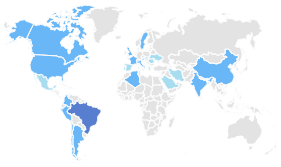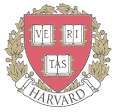(use esse template somente se não conseguir baixar o template completo na aba "SOBRE")
Nilo Sylvio Costa Serpa
GAUGE-F Scientific Researches, Brazil; Faculdades ICESP.
Received: _________________ / Accepted: __________________________ / Published:_________________________.
Abstract: This article investigates quantum gravity through a new approach based on quantization of spacetime and Lyra geometry. Singularity functions are applied to the study, whose main focus is to investigate the physics in the surroundings of supermassive bodies. Present work is a continuation of the research program on quantum gravity and time machines established by the author in a previous publication. The physical and geometrical features of the model are discussed.
Key words: Singularity functions, Lyra’s gauge, affine connection, Planck scale, parallel transfer.
Resumo: Este artigo investiga a gravidade quântica a partir de uma nova abordagem baseada na quantização do espaço-tempo, e da geometria de Lyra. As funções de singularidade são aplicadas ao estudo, cujo foco principal é investigar a física na vizinhança de corpos supermassivos. O presente trabalho é uma continuação do programa de pesquisa em gravitação quântica e máquinas do tempo estabelecido pelo autor em publicação anterior. As características físicas e geométricas do modelo são discutidas.
Palavras-chave: funções de singularidade, gauge de Lyra, conexão afim, escala de Planck, transporte paralelo.
1. Introduction
In recent times, inspired by works of Rovelli [7, 8, 9, 10, 11] and Baez [1], I developed a new framework for quantum gravity in which, instead of thinking about gravity as consisting of supersymmetric particles, I imagined a quantum structure of the spacetime itself, meeting the idea that general relativity is, first of all, a theory about the geometry of spacetime, and the gravitational field a representation of the deformations of that geometry. For this purpose, I have adopted an analytical model of the nature of the geodesic paths in a gravitational field, defining the invariant element of expansion or contraction of the Universe in commoving coordinates as the elementary <<grumo>> of spacetime. From this new perspective, I focused, in particular, on investigating the deformations that would lead time effects only, since time, as discussed previously [12], is the predominant dimension in the gravitational evolution of the heavenly systems. The suggested <<granular>> structure of the spacetime, that is, the size and type of the elementary <<quanta of spacetime>>, was treated mathematically with the aid of the so-called <<singularity functions>> [12].
2. The quantum spacetime phenomenology
The phenomenological model I chose to develop the construct of quantum spacetime was the interaction of two supermassive bodies with strains conflicting with one another. I considered singularities caused by spherical pressure from the outside in, not caused by a central high density; thus, unlike a hypothetical single central source, we have now several virtual external sources for each central singularity. Theoretically, such <<bubbles>> of compression can be generated by gravitational pressure caused by massive bodies close to each other like two supermassive black holes or two supermassive pulsars in close binary systems . Since bodies are not perfectly rigid, when two bodies interact gravitationally with one another their facing surfaces are more distorted because they are attracted more strongly than the opposite sides. But, the gravitational attraction between the bodies also tends to squeeze or compress them as they pull one another toward their center points; so, the strong attraction between massive bodies leads to a compression of space contained among them. This region of compressed space I called "G-closure" [12]. Therefore, gravitational <<bubbles>> of spacetime shrinkage within an expanding universe are plausible, featuring local inhomogeneities. We can speculate on the spacetime behavior in such physical conditions from the study of those supermassive binary systems.
3. The essential Lyra Geometry
… … … …
… … … …
… … … …
4. Discussion and conclusion
Timelike geodesics are treated with a bit of common sense even if one understands that it is in a conceptual level very far from a naive physical framework. This is so because time in GR is not the time of clocks but an evolutionary variable, and it is difficult to us to discard old archetypes like rules and clocks.
Whenever w e seek a new physics to give account for an almost impenetrable phenomenon we try to find the invariants of the theory, the referents that make possible to get some knowledge about, and this search unwittingly drags us again to the classical measuring tools for thought experiments. From my point of view, the most interesting thing about the introduction of Lyra's gauge is the feasibility of the description of a notional parallel transfer in time without changing the duration, regardless of the spatial direction. This is an invariant useful to describe one of the quantum faces of gravity.
As we have seen briefly, physicists try to interpret the real meaning of Lyra's extra-displacement terms in Einstein's equations giving to them the role of cosmological constant. Nevertheless, in my approach we have to return to Lyra's geometry discussing what is a time parallel transfer of a time interval in a certain direction. I remember that space is <<frozen>> in the singularity representation of a timelike geodesic; there is no space displacement. Therefore, in the natural gauge a time parallel transfer of a time interval is in fact a projection of this time interval in one space direction targeting another virtual geodesic path in which space coordinates would be also treated by singularity functions. This is a way to say that, under the same conditions, we have the same behavior of nature. In my work, these conditions feature the so-called G-closure. Importantly, this geometric review in no way precludes the representation of the cosmological constant; rather, it emphasizes the invariance of the duration under parallel transport, thus characterizing a constancy of nature.
Concluding, my point was to make a comprehensive physical explanation of the model, making compatible with general relativity the Planckian dimensions of certain gravitational singularities where the short distance quantum nature of spacetime becomes relevant. Lastly, I compared quantum spacetime with quantum Riemannian metric, measuring the spacetime shrinkage rate at the compressed region, having in mind the energy density, and analyzing some consequences of the high density at the immediate vicinity of massive objects. Some important points about the relations of my proposal with the classical formalism of general relativity were discussed in great detail in reference [12].
References
[1] Baez, J. 2005. Quantum Quandaries: a Category-Theoretic Perspective, Structural Foundations of Quantum Gravity. D. Rickles, S. French, and J. Saatsi, (Ed.) Oxford University Press.
[2] Butterfield, J., and Isham, C. 2000. “Spacetime and the Philosophical Challenge of Quantum Gravity.” In Physics Meets Philosophy at the Planck Scale, Cambridge University Press. (for proceedings)
[3] Lyra, G. 1951. “Über eine Modifikation der Riemannschen Geometrie.” Mathematische Zeitschrift 54 (1): 52-64.
[4] O'Raifeartaigh, L. 1997. The Dawning of Gauge Theory. Princeton University Press, New Jersey. (for books)
[5] Reddy, D., and Innaiah, P. 1986. Astrophys. Space Sci. 123 49.
[6] Reddy, D., and Venkateswarlu, R. 1987. Astrophys. Space Sci. 136 183.
[7] Rovelli, C. 2006. The Disappearance of Space and Time, the Ontology of Spacetime, Philosophy of Physics. D. Dieks, (Ed.) Elsevier Science Publishing Co 25.
[8] Rovelli, C. 2007. Quantum Gravity, Philosophy of Physics. J. Butterfield and J. Earman, (Ed.) Elsevier Science Publishing Co 1287.
[9] Rovelli, C. 2007. “Beyond the Screen of Time.” Nature Physics 3.
[10] Rovelli, C. 2011. “Zakopane Lectures on Loop Gravity.” arXiv: 1102.3660. (for archives)
[11] Rovelli, C. 2012. Et si Le Temps n'Existait Pas? Un Peu de Science Subversive. Dunod, Paris.
[12] Serpa, N., and Steiner R. 2016. “General Relativity, Quantum Gravity and All That: Time Machines in Perspective by Singularity Functions.” Bulg. Jour. Phys. 43(1): 1-20. (for articles)
[13] Shchigolev, V. 2013. “On Exact Cosmological Models of a Scalar Field in Lyra Geometry.” Universal Journal of Physics and Application 1(4): 408-413.
Corresponding author: Nilo Sylvio Costa Serpa, Ph.D., professor, research fields: quantum gravity, quantum computing, cosmology and thermal systems engineering. E-mail: [email protected].
































